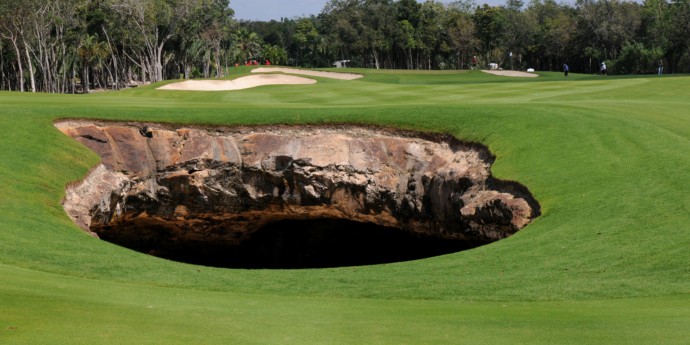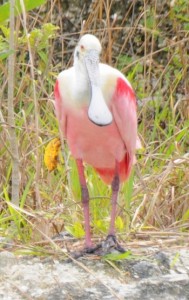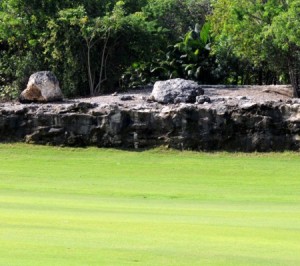Smack in the middle of the first fairway at El Camaleon, on the Yucatan coast south of Cancun, there’s a cenote that says a lot about the intentions of the course’s designer, Greg Norman. A cenote is a sinkhole, caused by eons of underground water eroding and washing away the soft limestone bedrock in this part of Mexico. The cenote on No. 1 at El Camaleon shows a wide mouth, a dry floor covered in gravel, and then drops away into a black hole that looks like it could lead all the way to China. It’s an impressive hazard.
But it’s the cenote’s location that makes it a great golf course feature. The first hole is a par 5, 554 yards from the tips and 532 yards from the white tees. The cenote is roughly 300 yards from the back tee. This means that the bomber who wants to reach the green in two has to deal with it. His drive will be landing right around the cenote. But the average player, hitting from the white tees, almost certainly can’t reach it. He can aim right at it if he wants. On his second shot, only a miserable foozle will be at risk of falling through to the Orient.
This kind of thoughtful use of natural features can lead an architect toward golf’s Holy Grail–a course that challenges the pros and yet remains playable and fun for the duffer. It’s an ideal that is probably unreachable, like breeding a horse who can both serve as a pony at kids’ birthday parties and win the Kentucky Derby. But Norman has come laudably close at El Camaleon.
On the other hand, I played the course the day after the tournament ended, and I can attest that for the average player (and my game is very average) El Camaleon is an enjoyable round of golf. There’s nothing extreme or tricked-up about the course. The turf is plush. Forced carries are easily manageable from the appropriate tees. There are many places where water or impenetrable jungle or even a limestone ledge impinge on the playing area, but the corridors are generally wide. It’s not hard to keep the ball in play. Though I didn’t come close to the mid-80s score my handicap suggests I should have had, that was primarily because:
a) I usually played away from pins tucked near hazards and frequently three-putted as a result; and
Mayakoba is an extensive resort complex, owned by a Spanish corporation. There are presently three hotels on the site–a Fairmont, a Rosewood and a Banyan Tree. They’re all luxurious, and from their balconies and private pools a guest can see a tremendous variety of avian life as well as the fairways of the golf course and the jungle around it.




